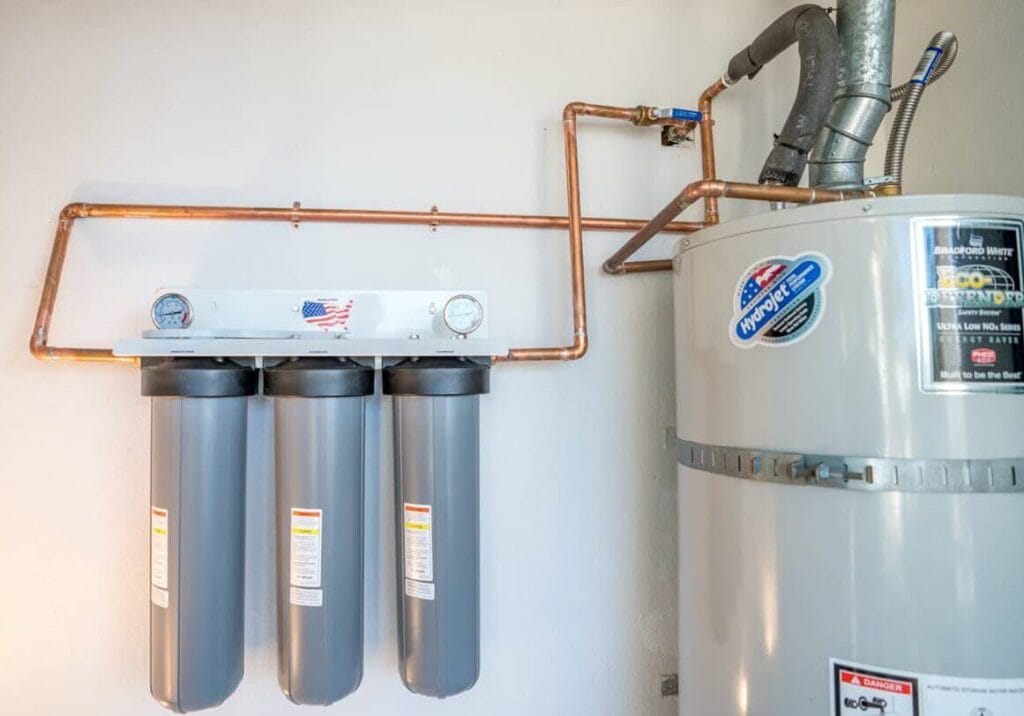Introduction
When was the last time you thought about your water heater? If you’re like most homeowners, it probably only crosses your mind when you’re standing in a cold shower, wondering what went wrong. The water heater is one of the most important appliances in your home, quietly working day and night to deliver warm water for showers, laundry, and cleaning. And yet, it’s often neglected until problems arise.
The good news is that with regular maintenance, you can extend the life of your water heater, avoid costly repairs, and keep your energy bills in check. In this guide, we’ll cover the top essential water heater maintenance tips every homeowner should know. Whether you own a traditional tank heater or a modern tankless system, these practices will keep your hot water flowing reliably.
Why Water Heater Maintenance is So Important
Think of your water heater as a car. If you never change the oil, clean the filters, or check the tires, the car won’t last long. The same principle applies to water heaters. Without regular care, sediment builds up inside the tank, valves wear out, and critical parts corrode.
When this happens, you may notice water heating slower than usual, strange noises from the tank, or even rusty-colored water flowing from your taps. Neglect can also lead to leaks or complete failure, forcing an expensive replacement much earlier than necessary.
By performing routine maintenance, you protect your investment and ensure you always have hot water when you need it. It’s about saving money, improving safety, and avoiding the inconvenience of an unexpected breakdown.
Essential Water Heater Maintenance Tips
Turn Off and Secure the System Before Starting
Before doing anything, always prioritize safety. For electric water heaters, switch off the breaker in your electrical panel. If you have a gas unit, turn off the gas supply. Allow the water inside the tank to cool before handling it, and shut off the cold-water inlet so no new water flows in during maintenance.
This simple step ensures that you’re working safely and reduces the risk of burns or accidents.
Flush the Tank to Remove Sediment
One of the biggest enemies of water heater efficiency is sediment. Over time, minerals from your water supply settle at the bottom of the tank. This buildup forces the heater to work harder, creating strange noises, reducing efficiency, and eventually damaging the unit.
Flushing the tank once a year solves this problem. To do this, connect a garden hose to the drain valve at the bottom of the tank and let the water run out into a safe drainage area. Once drained, turn the water back on briefly to stir up any leftover debris, then drain again. Refill the tank completely before restoring power or gas.
This simple annual task can add years to your heater’s life.
Test the Temperature and Pressure Relief Valve
Your water heater’s temperature and pressure (T&P) relief valve is a small but crucial safety feature. It prevents excess pressure or overheating from damaging the tank—or worse, causing it to burst.
Testing it is straightforward. Place a bucket under the discharge pipe, lift the lever on the valve, and let some water out. When you release the lever, the flow should stop immediately. If it doesn’t, or if no water comes out at all, the valve needs to be replaced.
Inspect the Anode Rod
Inside every tank water heater is a part called the anode rod. Its job is to attract corrosive minerals so that the tank itself doesn’t rust. Over time, the rod depletes, leaving the steel walls unprotected.
Checking the anode rod every two to three years is essential. If it looks thin or corroded, replacing it is far cheaper than replacing the whole heater. Think of it as a $30 part that can save you thousands in early replacement costs.
Set the Right Temperature
Most water heaters are factory-set to around 140°F, which is often higher than necessary. Lowering the thermostat to 120°F not only reduces energy consumption but also decreases the risk of scalding, especially in households with children or elderly family members.
Lower temperatures also slow down mineral buildup and reduce wear on the system. It’s a small adjustment that can make a big difference in long-term performance and safety.
Insulate for Energy Efficiency
If you own an older water heater or live in a colder climate, adding insulation can improve efficiency. Wrapping the tank with a specially designed insulation blanket reduces heat loss, meaning the heater doesn’t have to work as hard to keep the water warm.
Similarly, insulating the first few feet of hot and cold water pipes helps minimize heat loss as water travels through your plumbing system. Just be careful not to block the thermostat or safety valves when applying insulation.
Don’t Forget About Tankless Water Heaters
For homeowners with tankless systems, maintenance is just as important. While you don’t have to worry about sediment collecting at the bottom of a tank, scale buildup can still clog the system and reduce efficiency.
Most manufacturers recommend descaling tankless heaters at least once a year—more often if you live in an area with hard water. Cleaning filters and ensuring proper airflow around the unit also helps prevent performance issues.
Schedule an Annual Professional Inspection
Even if you handle routine maintenance yourself, having a licensed plumber perform a yearly inspection is invaluable. Professionals have the tools and expertise to catch issues you might overlook, such as small leaks, corroded fittings, or problems with gas and electrical connections.
An annual check-up is like a health exam for your water heater—it ensures that everything is working safely and efficiently, and it gives you peace of mind.
Real-Life Example: How Maintenance Saves Money
Take the case of a homeowner who began hearing loud banging noises every time their heater ran. After calling a plumber, they discovered that years of sediment buildup were causing the tank to overheat and expand unpredictably. The unit was only eight years old but looked ready to fail.
After flushing the tank, replacing the worn anode rod, and adjusting the thermostat, the heater returned to normal operation. What could have become a costly replacement was resolved with a few maintenance steps. The result was another five years of reliable service before upgrading to a new, more efficient model.
Common Warning Signs to Watch For
During everyday use, pay attention to changes in your water heater’s behavior. Rusty water, strange noises, leaking around the tank, or water that takes too long to heat are all signs of trouble. Foul odors, such as a rotten-egg smell, may indicate bacterial growth or gas issues in the case of gas-powered heaters.
Catching these warning signs early means repairs can be made before the problem becomes serious.
Professional Care with Smooth Plumbing
Water heaters are easy to forget about, but the comfort of hot water is something no household can do without. Regular maintenance—flushing, testing safety valves, checking the anode rod, and scheduling annual inspections—can save you money and extend your system’s life.
At Smooth Plumbing, we specialize in keeping your water heater running efficiently and safely. Our trained technicians provide thorough inspections, professional maintenance, and reliable repairs, ensuring your system performs at its best year after year.
Don’t wait for a breakdown or a cold shower to remind you about maintenance. Contact Smooth Plumbing today and schedule your water heater service with a team you can trust.
FAQs
How often should I maintain my water heater?
At least once a year for tank units, while tankless systems may need descaling once or twice annually in hard-water areas.
What temperature should I set my water heater to?
120°F is the ideal balance of comfort, safety, and efficiency.
Do I need a professional for water heater maintenance?
Basic steps like flushing and adjusting temperature can be DIY. But annual professional inspections are highly recommended to ensure safety and catch hidden issues.
Can maintenance really extend the life of my water heater?
Yes. With proper care, tank heaters often last 10–15 years or more, while tankless models can last 20 years.
What’s the most important step I shouldn’t skip?
Flushing the tank is the single most important maintenance step, as sediment buildup is the leading cause of efficiency loss and early failure.

